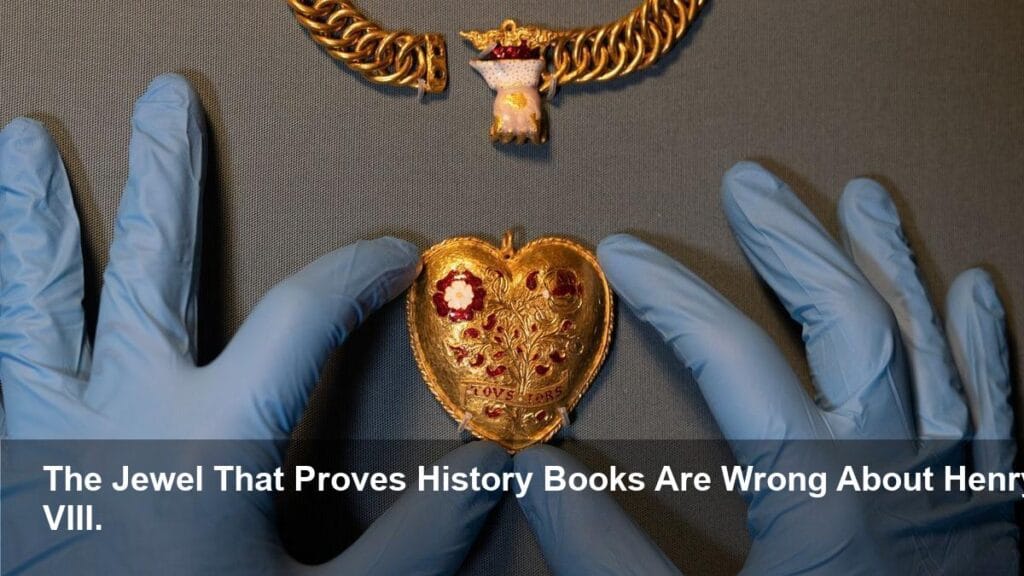Historic Love Story Rewritten By Lost Tudor Jewel

- A 16th-century gold pendant, known as the Tudor Heart, was discovered in a Warwickshire field in 2019, sparking a historical debate.
- The necklace features the intertwined initials ‘H’ and ‘K’ and symbols of Henry VIII and his first wife, Catherine of Aragon, challenging the popular narrative of their doomed romance.
- The British Museum is now in a race against time to acquire the piece, which has been declared a national treasure, to prevent it from disappearing into a private collection.
- The artifact provides powerful evidence of the couple’s genuine affection and the strength of their early political and personal union.
A Discovery That Could Change History
A stunning piece of Tudor history, unearthed from a Warwickshire field, is threatening to rewrite one of the most infamous royal love stories. A gold heart-shaped pendant from the early 16th century, believed to have belonged to a member of the royal court, provides a tangible link to the early, happier days of King Henry VIII and his first queen, Catherine of Aragon. Discovered in 2019, this “national treasure” has ignited a fierce debate among historians and prompted a major acquisition campaign by the British Museum.
Symbols of a Forgotten Love
The exquisite pendant is more than just a piece of jewelry; it’s a historical document. Made of 24-carat gold, the heart is intricately decorated with symbols of the royal union. On the front, a Tudor rose is intertwined with a pomegranate bush, Catherine of Aragon’s personal emblem from her Spanish heritage. The reverse side features the initials ‘H’ and ‘K’ (for Katherine) linked by a ribbon, reinforcing the message of their bond.
This symbolism is a powerful counter-narrative to the widely held belief that their marriage was solely a political arrangement destined for failure. The pendant suggests a period of genuine unity and affection, a story often overshadowed by the dramatic divorce that led to England’s break from the Roman Catholic Church.
The Race to Save a National Treasure
The significance of the Tudor Heart has not been lost on cultural institutions. After its discovery, it was officially declared a national treasure, but its fate remains uncertain. The British Museum is now leading a public campaign to raise the necessary funds to acquire the pendant for its permanent collection.
A Debate Ignited
Historians are captivated by what the necklace represents. For centuries, the narrative of Henry and Catherine has been dominated by his obsession with a male heir and his subsequent passion for Anne Boleyn. This artifact, however, forces a re-evaluation of their early relationship. It serves as social proof of their once-strong alliance, confirming the suspicions of many historians that their story was far more complex than the tale of a tyrant king and his spurned wife.
Why It Matters
If the British Museum fails in its bid, the Tudor Heart could be sold to a private collector, and this crucial piece of English history would be lost to the public forever. Its acquisition would ensure that this stunning symbol of a forgotten love story can be studied and admired by millions, offering a new perspective on the formidable Tudor dynasty. The clock is ticking, creating a fear of missing out on securing this irreplaceable link to the past.
Image Referance: https://www.vanityfair.com/style/story/tudor-heart-necklace-henry-viii-catherine-of-aragon

